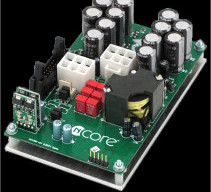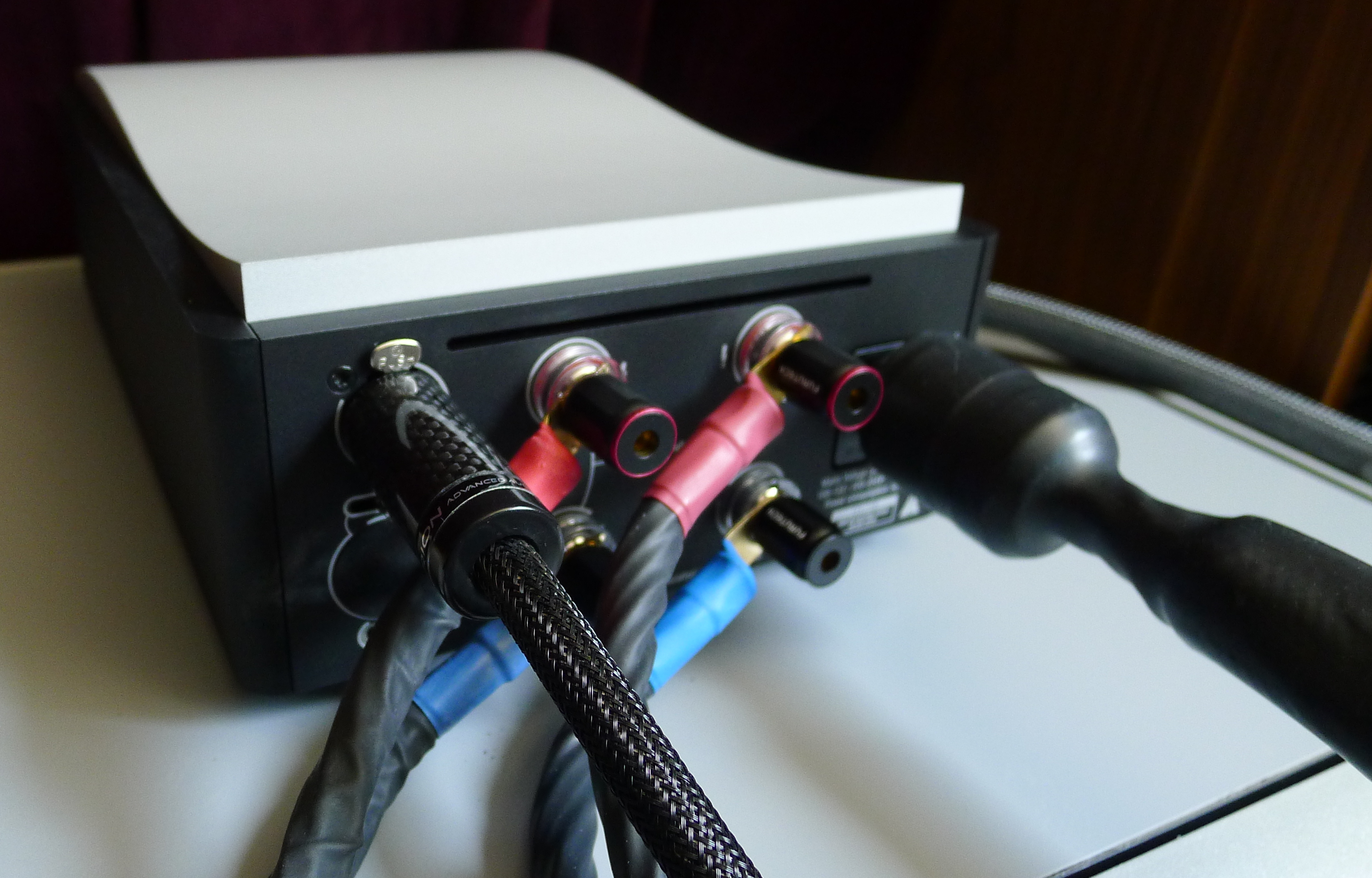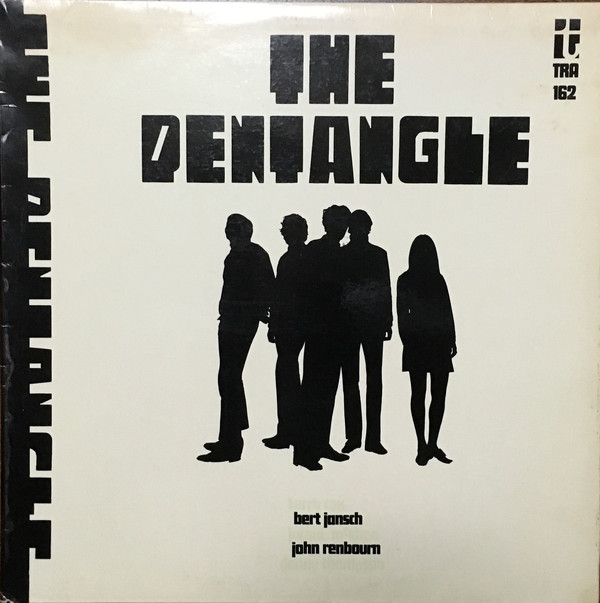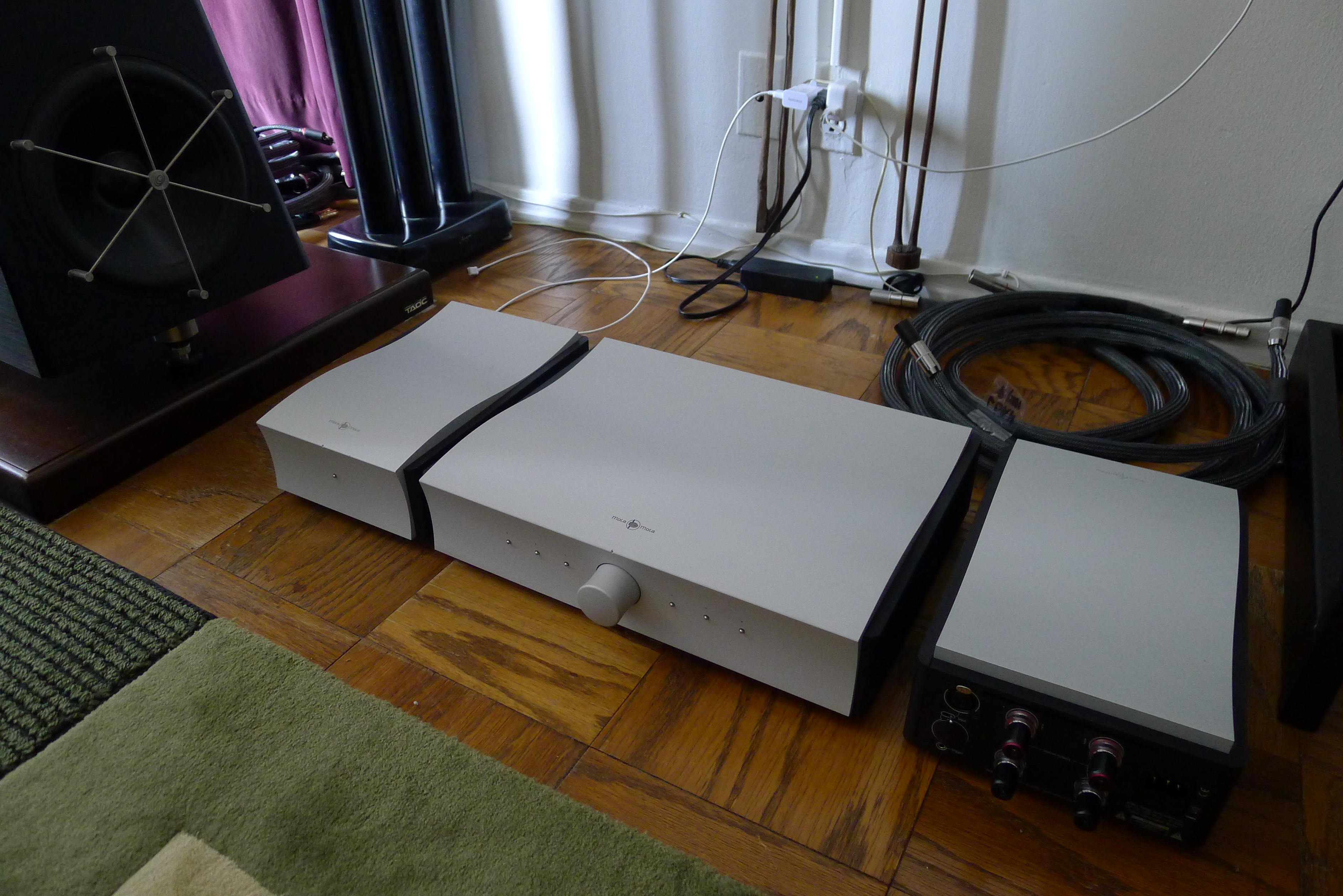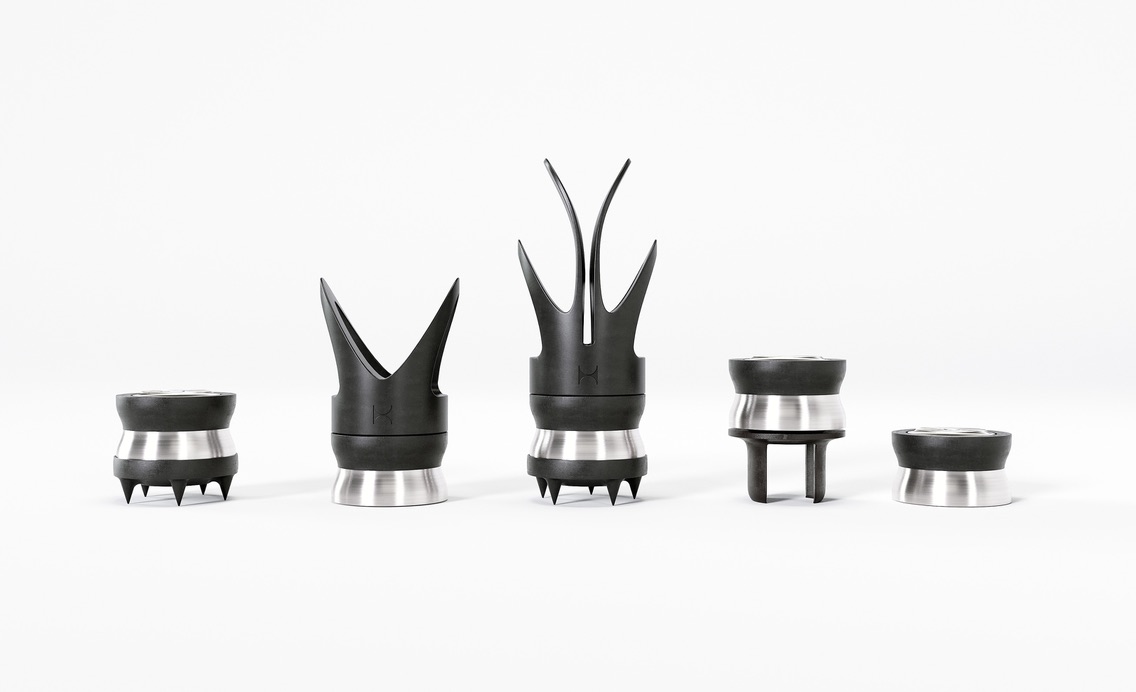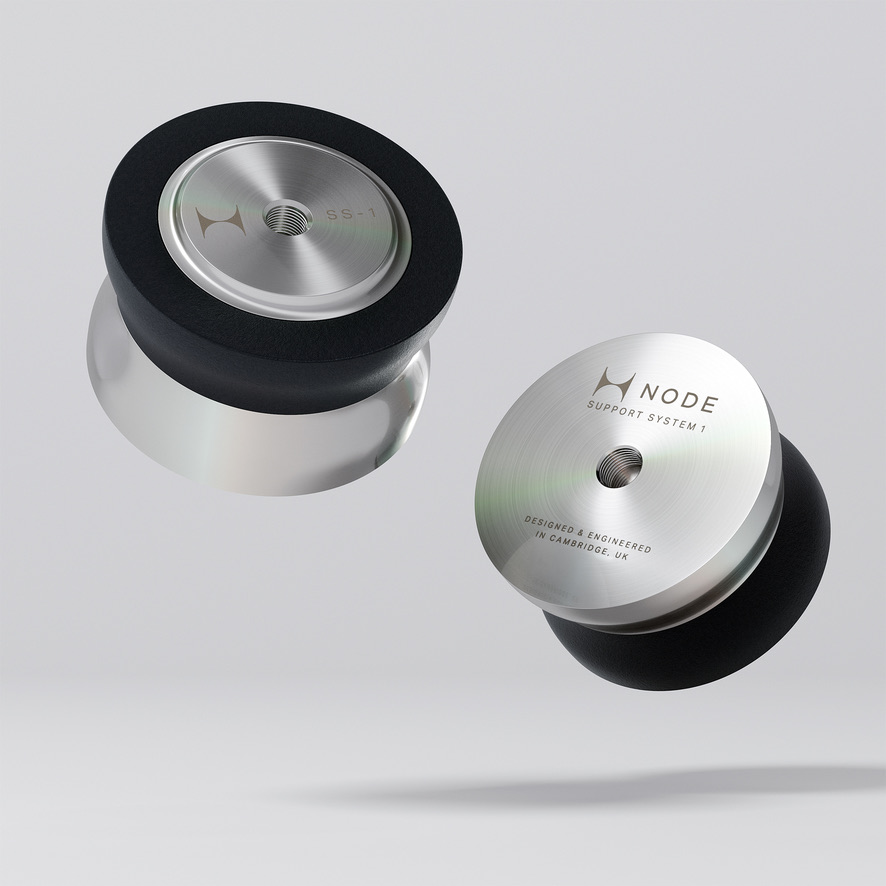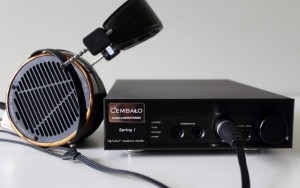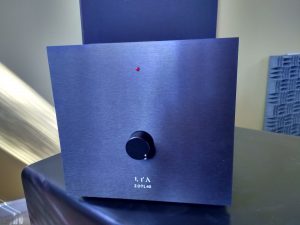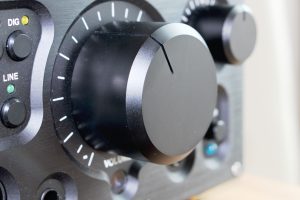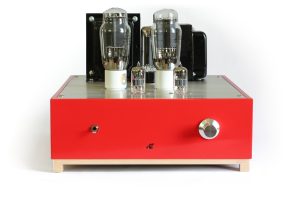Mola-Mola Kaluga circuit board
Some of you may recall when Class D amplification began to appear in high-end journals. There were birthing pangs, to put it mildly. Granted it was quiet, linear, and powerful; on the other hand, it was often dry and brittle. The treble, in particular, was nasty. At the time, around 2006, the only Class D amp I found palatable was the MP150, a UcD amplifier designed by Bruno Putzeys and marketed for the Netherlands-based Kharma brand.
The Designer's Resume
Time moves on and so did Putzeys. He came out with the NC1200 module, the first Ncore amp, marketed under the Hypex brand, and addressed the treble issue. From this point forward the sound of Class D began to rotate towards smooth—often overly smooth.
Putzeys has always been in the foreground of Class D development. You will find his latest designs, the Makua preamp and Kaluga monoblock amp (a Class D design) marketed by a company called Mola-Mola, which he cofounded with Hypex founder Jan-Peter van Amerongen. The odd names refer to various species of large fish.
Kaluga monoblock
What about Class D?
Class D amplification never gained wide acceptance. Many people think it has an unpleasant sonic signature and prefer the traditional Class A or Class AB topologies. Since I share that bias, I hesitated when Bill Parish of GTT Audio proposed a Mola-Mola review project. But not for long—considering this was Putzeys latest effort, it was too tantalizing to pass up.
"What the hell," I decided. "Time to stretch out a bit: Let's find out."
Makua on ELpF platform
The Amp and the Linestage
"The basic Makua is an extremely transparent gain stage and a programmable routing matrix. The chassis has ample room to fit optional extras, most notably a DAC and a phono stage."
My sample Makua preamp came loaded with the DAC and phono boards. In effect, the medium-sized chassis contained an entire front-end system. Given so many possibilities to explore, I decided to approach the component in phases to avoid getting overwhelmed. In this review, I'll cover the Kaluga monoblocks and the Makua linestage function only. That will keep the variables manageable and give me a handle on the Makua/Kaluga baseline performance. I'll use my present source components, the CH Precision digital and the Lamm LP1 Signature Phono stage (in for review). The DAC and phono boards could be evaluated at a future time.
The Sound
These days when I want to hear Bartók I reach for the Bartók New Series on the Hungaroton label. This critically acclaimed set of SACDs featuring Zoltán Kocsis and the Hungarian National Philharmonic Orchestra is more aggressive and raw than the familiar references, like the Golden Age analog recordings with Reiner and the Chicago. To my ear, it is ethnically spiced and captures more of the folkloric, national flavor.
I put on Rhapsody No.1 for Violin and Orchestra (HSACD 32509). As I said, these SACDs are aggressive. If I close my eyes I feel like I'm on stage next to the soloist. The violin sounded gritty and coarse, like it does on jazz recordings when they put the mike on the bridge of the instrument. It's all string sound—where's the wood? Big and punchy, too in your face, it was downright unpleasant. I didn't particularly want to hear Bartok in this manner.
I swapped to Rachmaninov's Symphony No 1 (LSO0784), a recent SACD that I knew to be softer sounding. And so it was. The stage moved back, transients relaxed (and so did I). It still had vitality and kept me involved. No complaints on this sound—it was great!
So it went, swinging between extremes, sometimes relaxed and refined, other times harsh and aggressive. On an Esoteric SACD of Bartok's Concerto for Orchestra, one of my top reference discs, low bass was pumping away out of balance. It made me want to adjust the powered subs. But then I'd swap CDs and the bass was no problem.
The M-M wasn't consistently one thing or another. I couldn't get a handle on its footprint. It was reflecting what it was being fed, but in an extreme manner.
Subjective Evaluation
Then it dawned on me: That's exactly what Putzeys wanted. In our chats, Bill had described the Mola-Mola suite as having no sound of its own. To an impressive degree that's what I was hearing. Take a look at the Mola-Mola website. Putzeys is very clear about the company's goals: "... to build electronics capable of passing a signal with no discernable change at all."
Further, Putzeys makes an interesting case that we're on the wrong track when we compare two preamplifiers to determine which one is more right. A true product evaluation should compare the output of the device in question with the original signal—compare the input signal with the output signal—to see in what ways the sound changed.
Hmm; you can't argue with that. In theory, a component that is a pass-through in which what comes out is the same as what went in is a perfect design. This type of component would have great appeal to the fidelity to master tape type of listener.
[For the record, I hasten to add there are other types of listeners with different goals. I identify with the group seeking components that bring me closer to the sound of unamplified acoustic instruments in a good hall. To that end, what I (and most reviewers) do is known as subjective observation/evaluation.]
Great Specs
Eventually, I found the M-M's fleet footprint. Let me describe it for you.
The designers' focus on these laudable goals is audible front and center. I quickly determined that 1) frequency response was really smooth, flat like those laboratory graphs you see in product advertisements, and 2) notes exhibited excellent shape over their life cycle. Transient behavior was right on the money. Everything arrived together, with no discernible overshot or lagging. Decays dissipated as one piece.
It was coherent and natural, so natural that it was unremarkable. That is the best scenario, because in real time these things just happen. You're never thinking about speed or crispness. A component that calls your attention to them is most likely hyping something.
PRaT
I suspect this explains why PRaT was so good. When I put on The Pentangle (original Transatlantic LP), the kick drum elicited bone-jarring impulse responses. The bass was driving the beat and all heads present were bopping in time. And, of course, it was tight and tuneful.
Gobs of Power
Without a doubt the biggest impact was in macro dynamics. Dynamic range is HUGE. That's the first thing Class D brings to the table. Getting 400 watts from a traditional amp is uncommon; for Class D, it is a routine matter. That's because it is the most efficient type of amplification we know. In practice, efficiency of 90% is not uncommon in these switching amps. The output devices are fully on or fully off—never in between—and all of the power supplied is delivered to the speaker load with very little converted to heat. Class B, or push-pull, where the output devices are on only partially at a given moment, averages around 50% efficiency. Pure Class A runs full output all the time and averages about 25%. (Source: Wikipedia)
There's something to be said for driving your speakers with gobs of power from amps that spec well beyond the manufacturer's recommendation. In this case the Kaluga amps have a rating of 400 watts into 8 ohms. My YG Anat speakers are used to a diet of 200 watts (albeit with lots of current). There is a difference and you can feel it.
This reservoir of power allows the Kaluga to wrap around signal peaks and send them jumping as few traditional amps do. Meanwhile, it never sounds stressed or hits a ceiling. Initially it can seem like too much. That's because you've probably not heard such "Snap-Crackle-Pop" dynamics in a home environment before. Don't worry: with prolonged exposure it becomes habit forming. In the area of macro dynamics the M-M Kaluga is outstanding.
Tone and Timbre
Rounding out the Audio Report Card, tonal balance is quite close to my CH Precision gear. Flesh and body are generous and disbursed equably, although there could be a little more density in the lower frequencies. The treble is immaculate. High notes have a soft tactile quality and rounded edges.
Textures and timbres are adequate for easy identification of instruments, especially woodwinds. The M-M suite meets expectations for micro dynamics, soundstaging, resolution, and transparency. Like many Class D amps today, the Kaluga are grainless and without a hint of abrasiveness.
So what about Class D?
Getting back to the initial concern about an unpleasant Class D signature, a wide swath of guys came by to hear the Mola-Mola suite, many with upfront reservations about Class D amplification.
But once they sat down and heard it, the subject of Class D never came up again. In fact, everyone liked the M-M suite and nobody raised any criticisms. It was only when I switched to my considerably more expensive CH Precision L1 linestage that shortcomings were noticed. The M-M gear sounds like very competitive solid-state components, period. There is no need to qualify that with "for Class D."
Analytical?
On another note, I have to confess I had some apprehension about the focus on having no sound of its own. My mind translated it to "Uh-oh, this could be another one of those theoretically perfect designs with great specs but no soul." Colorlessly neutral often turns out to be thin and airy—in a word analytical.
Those fears were misplaced. Fortunately, the great specs were balanced with the musical virtues of warm tone, full body, and especially the non-fatiguing treble. These allow the M-M duo to escape the dreaded ‘A' word. Mated with carefully chosen ancillary gear, that shouldn't be an issue.
Cosmetics
The Kaluga monoblocks are shoebox size weighing 15.5 lbs. each. The matching Makua Preamp is a 24lb. medium-size box, smaller than most preamps. If you go with the DAC and phono, everything is contained in the Makua, eliminating all those external chassis plus their power cords and interconnects.
Compact, full-function, the look is clean and stylish, if not luxurious or overbuilt. The M-M suite is intended to be lifestyle products. The Makua flanked by the Kaluga amps would look swell on a single shelf or two, or on a fine credenza. Each chassis sports the same cosmetic: thick, matte-grey German aluminum face plate and top cover with black accents on the sides and rear. The front and top covers undulate, like an ocean wave. They would not be out of place in a family room and don't have to be relegated to the audiophile's lair.
Installation
The Makua Pre went on an ELpF Vibraplane active isolation platform on my TAOC rack. The Kaluga monoblocks went on TAOC amp stands. At Bill's suggestion, we began with Kubala•Sosna Elation! wiring throughout the system. Later I reverted to my reference, a combination of Elation!, Stage III power cords and interconnect, and Dynamic Design's Neutron SW 16 Digital power cord for the transport.
Conclusion
Audiophiles come in many stripes and a wide assortment heard the Mola-Mola suite. About the only thing these guys have in common is concern for their billfolds—and, for many, reservations about Class D amplification.
When they heard the Mola-Mola gear, the subject of Class D never came up. There was no distinguishing Class D signature. The M-M Kaluga sound like very competitive solid-state amps, period. No need to qualify that statement with "for Class D."
This is a pair of machines that do everything well. In particular, I was quite taken by their dynamic range, which is off the charts, and their minimal footprint. The Mola-Mola suite can sound cultured, even delicate, maybe even laid-back and not exciting. Or they can be the opposite. They are about as close to neutral as I've heard, coming really close to no signature. Those audiophiles who want the gear to step aside and value fidelity to the master tape should take note.
Makua Linestage
Retail: $11,740
Optional Phonostage
Retail: $2900
Optional DAC
Retail: $7850
Kaluga Mono Amps
Retail: $16,500/pair
Mola-Mola
Distributor Information
GTT Audio/Video
908-850-3092
www.gttaudio.com




